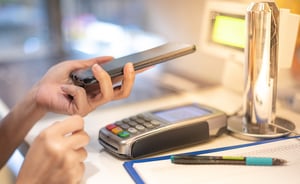The Impact of a Cashless Future for Credit Unions
 Digital payments and technologies are reshaping how people all over the world spend money--to the point where some economists are debating the future of cash. It’s not just the widespread use of credit and debit cards, but the rise of digital wallets, digital banking apps, direct deposits, instantaneous peer-to-peer payments and digital lending services that are solving people’s banking needs, and as a result, making cash less common.
Digital payments and technologies are reshaping how people all over the world spend money--to the point where some economists are debating the future of cash. It’s not just the widespread use of credit and debit cards, but the rise of digital wallets, digital banking apps, direct deposits, instantaneous peer-to-peer payments and digital lending services that are solving people’s banking needs, and as a result, making cash less common.
If you consider these trends--combined with the rise of fintech apps, cryptocurrencies and the surge in eCommerce due to the ubiquity of smart phones among people of all ages--it’s no surprise credit unions are concerned about the future of money. They’re also concerned about how the transformation will affect them. Let’s take a look at some of the reasons digital banking is on the rise, and what credit unions can do to stay on top of the market.
Digital banking on the rise
Cash has been in circulation for centuries and it is unlikely to disappear entirely. However, there’s no doubt that the use of credit and debit cards, online banking and other forms of cashless payments are surging in America and elsewhere around the world. In fact, in 2017, a report from ForexBonuses.org listed the U.S. as fifth on a list of the ten most cashless countries in the world. According to the report, at the time there were three credit cards for every person in the U.S.
But it’s not just credit cards people are turning to. These days people have access to a wide variety of digital and mobile banking options and evolving technologies. People are waking up to the potential of digital solutions to solve their banking needs, and many credit unions are embracing the benefits of digital banking as well.
Some of the benefits of digital banking over cash include:
- Speed: Services such as Zelle allow you to send money to merchants or friends who are thousands of miles away instantaneously. This simply isn’t possible with cash.
- Security: People may be comfortable using cash for small transactions but carrying too much can be dangerous. If you’re robbed or lose cash, there’s no recourse to get your money back. On the other hand, a lost debit card can be replaced and any transactions that were fraudulent can be refunded.
- Price: Processing electronic payments does not take as much manpower so transaction fees can be lower. Credit union employees can have more time to focus on their member wants and needs.
- Health concerns: Many people are still uncomfortable with in-person interactions and cash exchanges. This has no doubt led to an increase in eCommerce sales and digital banking over the past couple of years.
The benefits of a high-quality, seamless digital banking platform are unprecedented and will likely be a major force in shaping the future of credit unions.
The argument for (some) cash
Although many Americans enjoy the benefits of digital banking solutions, large segments of the population remain that use only cash. Around 7% of all U.S. households, according to a survey by the FDIC, are unbanked and nearly 20% are considered “underbanked.” In general, those with a low income are less likely to use banks as they are often hit with banking fees for non-sufficient funds, and sometimes have their accounts closed. Also, 7% of Americans don’t use the internet, making them incapable of using digital banking services.
So before credit unions jump on the digital bandwagon completely, it helps to remember that some members may continue to use cash and traditional in-person services. Though the future will probably see an expansion in digital solutions and less cash, it’s unlikely to be cashless entirely.
Next steps for credit unions
What will be important for credit unions is to give members many options and to wisely leverage the right technologies to create a digital banking platform that is fast, flexible and user-friendly. FLEX has partnered with Zelle to bring your credit union members a fast, safe and easy way to send and receive money with people and businesses they know and trust--typically within minutes. Even if the sender and receiver bank at different financial institutions, your members can send, request and receive money, split expenses and much more. You can download the eGuide to learn how.



